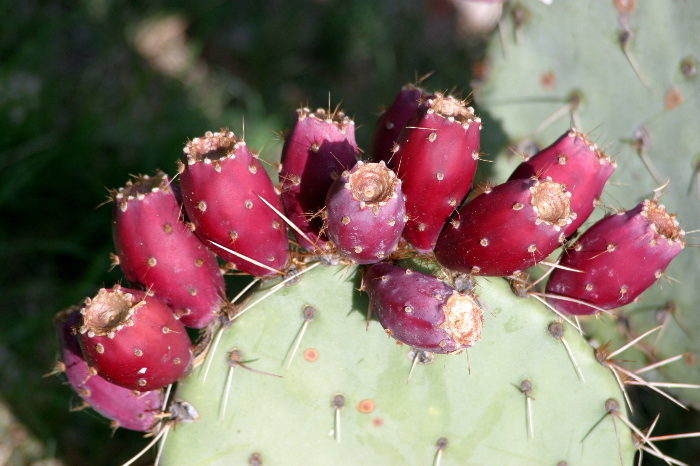How to Extract Cactus Juice at Home

The juice of cactus pads and prickly pears is an oft-used ingredient in Mexican cuisine, and is sold at a variety of health food stores owing to its ability to help in the curing of type 2 diabetes, high cholesterol, viral infections, obesity, hangovers, and a host of digestive ailments. Containing a rare antioxidant called betalains, along with the additional properties of other antioxidants, fiber, pectin, and vitamin C, cactus juice can be extremely beneficial. While the spines covering the plant and fruit may be intimidating, cactus juice can be extracted at home, if the procedure is carried out with caution.
Things Required:
– Thick gloves
– Duct tape
– Pliers
– Knife
– Potato brush
– Kitchen mallet or hammer-style meat tenderizer
– A wire mesh strainer
– Large pot
– Stove
– Large bowl
– Cheesecloth
Instructions
-
1
Find a good-sized patch of wild cactus. The best time to harvest and juice cacti is in September, so make sure you have the timing right. Single out a cactus that has good-sized pads (the “leafy”, vegetable part of the plant) and lots of spiny, purple fruits (also known as prickly pears, or tunas). Cut off a good-sized portion, and bring it home.
-
2
Now, slip on a pair of thick rubber or leather gloves, which will protect your hands from the spines. Then, unroll large strips of duct tape, apply these to the cactus, and then rip them off – ideally, the needles and spines should stick to the tape, and come right off. For the thicker, more lethal spines, use a pair of pliers to pull these out.
-
3
Once all the spines and needles have been gotten rid of, use a knife to separate the pads from the pears. Both can be used for juicing purposes, but the methods for extracting juice are different for each. Once they have been cut apart, put them in separate bowls.
-
4
First, begin juicing the pads. Wash them under running water, and use a potato brush to get rid of any dirt or soil that might be clinging to them – however, make sure you do not scrub too hard, as you might puncture the skin and cause the juice to leak out prematurely. The, place the washed pads in a large bowl with a wide mouth.
-
5
Next, use a kitchen mallet or hammer-style meat tenderizer to crush the pads. Press against them until they are entirely broken and have let out all their juice. Then, strain the juice into a separate bowl, by pouring it through a wire mesh strainer. Dispose of the solids once all the juice has been strained.
-
6
If you are looking to juice the fruit, begin by washing the pears under cool running water, all the while scrubbing them with a potato brush, to remove any dirt or sand. Then, prepare them for juicing by slicing 1/2 an inch off both ends, to reveal the inner flesh of the fruit.
-
7
Now, slit the fruit halfway through, from the top to the bottom, using a large, heavy knife. Once all of them have been sliced in a similar manner, place them all in a large pot, fill it with enough water to cover the fruits, and then place this on the stove to boil over high heat.
-
8
Once they have been boiling for a while, bring the heat down to low, and simmer the pears for around 45 and 60 minutes, until their interiors become soft. When they become mushy, remove the fruit from the water, and let it cool until it reaches room temperature. Then, slit the fruits open, scoop out the flesh from the inside, and place all the pulp and seeds into a large square of cheesecloth.
-
9
Bring the ends of the cheesecloth together in the middle, hold it over a bowl, and squeeze it until all the juice drains out into the bowl. Then, discard the remains left in the cheesecloth, and use the juice in the bowl as per your preferences.





